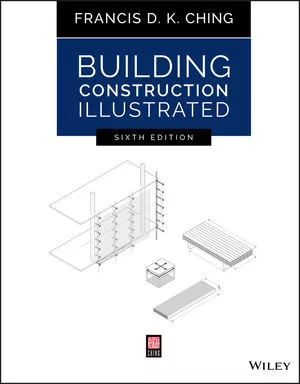Construction-Management Sins
Throughout the years, I’ve watched contracting and construction change. No greater change has taken place than the move from general contracting (GC) to construction managing (CM). In the old days, general contractors employed carpenters. Many GCs even poured their own concrete. Today, many, if not most, CM personnel have little hands-on craft experience. Their tools of the trade are computers and emails, not hammers and saws. This might be compared to a fine restaurant where management knows little about cooking or a vineyard without a winemaker.
Construction management is here to stay, as fast-track construction and the CM process fits today’s building owner’s style of constructing where time means money.
However, lack of craft knowledge tied into instant communication can create chaos. Can you imagine Michelangelo’s response to an email from the Pope telling him that he’s behind schedule or a text that the scaffold needed to be moved? Yes, most of today’s structures aren’t the Sistine Chapel, but they all involve craftsmanship. Yes, craftsmanship has ramped up with faster-drying paints, prefabbed products and easier-applied materials, but by its very nature, craftsmanship takes time. It also requires sequencing. Just because you can instantly communicate with me by cell, text or email doesn’t mean that I can instantly perform a craft task. CMs can demand more people on the job, but you still can’t paint the wall until the drywall is up or put the roof on until the building structure is in place. So, how can subs win in today’s construction environment?
Accept this new construction norm. Since your new-construction customer isn’t going to change, you must change how you manage your business and put new practices in place.
Visit jobsites prior to starting work. Take it upon yourself to ensure the work area is ready; don’t just take the CM’s word for it. Frequently, such schedule/performance demands are done from paperwork and prints rather than an actual visual inspection of the job. Gather information, see when the job will actually be ready, and document what you need. When possible, wait as long as long as you can and have the maximum work area ready; then attack the job to perform work as quickly and efficiently as possible. Yes, you will take some heat, but if you perform big when you do perform, no one will care.
Understand that good offense beats bad defense. You must tell the construction manager what you need to stay on schedule. Use technology and planning to stay ahead of the game. Take photos of work areas where you plan to be next week, and clearly layout what you need to be done so you can stay on schedule. Don’t be rude or offensive; merely document the facts. Numerous apps are available where you can take a photo of an area, write on it what you need and email the photo. This is truly a case where a picture is worth a thousand words. Tell the CM superintendent that you’re going to make he or she look good as long as you get open work-area availability. As a professional, lay out a clear path of work. Be reasonable and realistic. In the construction manager’s onsite personnel’s defense, many are buried in a sea of paperwork and don’t know what’s needed until you tell them. Be an information ally.
Consider going digital. If you’re going to stay in this fast-track world, you need to do the research and be able to have jobsite digital access to prints and other information. It’s hard to build something if you don’t know what you’re going to build.
Seek out better foreman. No longer can you survive with a guy who’s merely a good tradesperson. Your people must be able to plan ahead and see what’s needed. If they don’t have that ability, project management will have to do it for them. Wait and assume all is OK, and you will die a slow death by slowed production.
Plan and visualize your goals. Each and every week, plan one week in advance for the following things.
- Craftspeople. Do you have the people available to do the job, or can you let a couple go to another job until this one picks up?
- Tools and equipment. Do you have the tools, lifts or other equipment that you may need?
- Material. Do you have the material needed, or can you verify it’s on order and will be available?
- Work area. Is the work area available? Do other crafts need to finish work before you can perform your scope of work?
Everything changes. If you’re not growing, you’re dying. New construction is not the same business it was 25 years ago. To make matters worse, gross margins are lower and schedules tighter. The only way you can survive is to be more efficient and do a better job of preplanning.
Looking for a reprint of this article?
From high-res PDFs to custom plaques, order your copy today!





